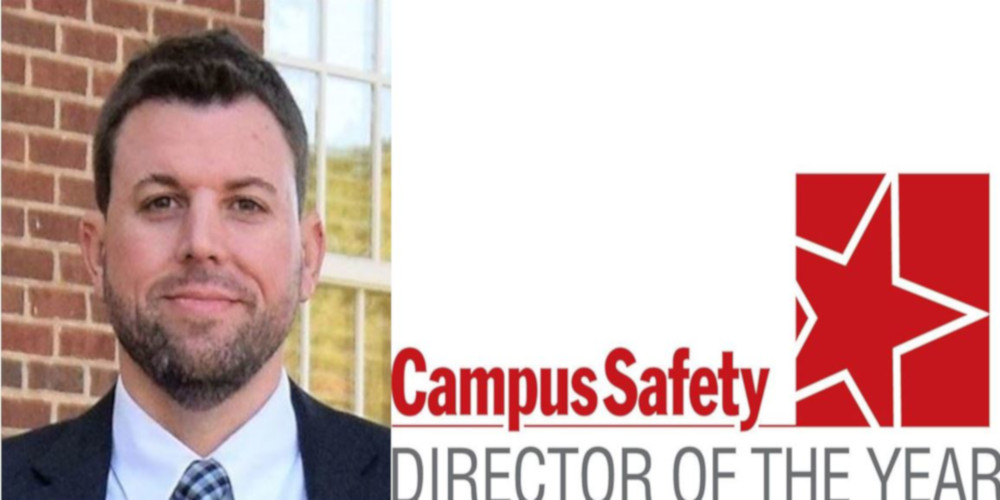Sometimes the annual drills include weather and natural disaster scenarios, such as hurricanes, tornadoes and even earthquakes (the county is on a fault line). Although an earthquake or severe weather might cause multiple injuries, the fire and rescue service might not be able to respond because of blocked roads. Knight says that because of this possibility, schools can’t rely on staff nurses with limited supplies to treat multiple casualties. Each Berkeley County school now has a crisis response team made up of staff members who are first aid certified. The SROs train with the teams and can help first aid efforts with the mass casualty kits.
School Safety Committees Meet Monthly
Knight also organized school safety committees at every campus. Composed of assistant principals, school counselors, school nurses, head custodians, child nutrition managers and CPR-certified teachers, the teams meet monthly to conduct tabletop exercises or discuss safety and security issues. Then the SROs relay the information to Knight’s department.
Knight also created and implemented self-defense and injury prevention training for all BCSD school administrators. BCSD is the only district in the state that offers this training. The district partnered with an outside company to design the training program, which includes de-escalation techniques and basic self-defense tactics.
“It focuses on how to defend yourself properly from being attacked or being grabbed, and also how to safely prevent others from being harmed or injured,” Knight says. “The training is defensive — no striking, hitting or kicking. I think it has been beneficial, and our administrators have really bought into the program.”
Staff Learn How to Recognize Gunshots
Perhaps the most popular training that Knight has implemented is gunshot recognition.
“About two years ago, I came across this FBI training and I asked them to come in and do it in our district,” he says. “A lot of people, including SROs, have never heard the sound of real gunfire inside a building. They’ve never been exposed to it, and so I thought it would be a good thing for them to experience. It can help them react more quickly to a situation if they know whether it was a locker door slamming, a book dropping or a gunshot.”
Knight said he received rave reviews from the administrators who experienced the training, as well as many requests to repeat it. Now BCSD is tailoring the FBI’s training to fit the district.
“Four hundred teachers took it, and we want to do it annually from now on,” says Knight. “The media did quite a few stories about it, and in December I am scheduled to present it to a local college.”
Knight Improves Emergency Communications
Superintendent Jackson lauds Knight for fostering collaboration in crisis communications.
“He’s working with the BCSD’s Communications and Community Engagement Department to ensure that employees who are essential for crisis management are aware of this and attend training,” says Jackson. “Parents and guardians are kept informed of all safety and security concerns at their children’s schools. Anytime lockdown procedures are initiated, Mr. Knight personally informs representatives in the communications department who then immediately inform parents and guardians via text alert, call-out messages and social media updates.”
Another improvement was to BCSD’s anonymous telephone tip line. Although the district already had a tip line, Knight noticed that students are much more comfortable with texting, rather than leaving a voice message. The district, which already had a communication app, added a feature to it that enables anonymous reporting. Those changes were implemented in August, and BCSD has already received some meaningful tips from students and parents.
Knight says one of the most important developments in the last few years is that they’ve created an atmosphere where it is okay to report.
“We’ve had some incidents this school year where our students have said, ‘Hey, something’s going on’ — whether it was anonymously or whether they went to a teacher or an SRO or they called my office,” he says. “The last few incidents in the district have been a result of threats conveyed over social media. They were reported in a timely matter, and we got a quick resolution from law enforcement, which found the sources of the threats. The students see that when they do report, we take it seriously. The matter may not seem like a big deal or not a realistic threat or security issue, but we will investigate it and get to the bottom of it.”
When asked if he would do anything differently if he could do it all again, Knight focuses on student involvement.
“Our students are our eyes and ears in schools, and I think we don’t use them enough to help us, and we don’t show them enough that we’re a team and that this is a joint effort,” he says. “In the last couple years, we’ve made really listening to them a theme, as well as encouraging our SROs to build relationships with their students — become that friend, become that counselor, become that mentor. I think more security departments in schools across the country need to listen to what their students are saying.”
Ann Longmore-Etheridge is a freelance writer with more than two decades of experience writing about private security and law enforcement issues.







